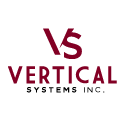Asset Tracking vs. Inventory Management
For a company to run smoothly and maximize profit, it must keep track of its assets. The term “asset” is very broad and refers to everything a business owns that has current or future economic value. By definition, a company’s assets also encompass its inventory. While this broad definition adds confusion to the topic, there are key differences between Asset Management and Inventory Management systems. Through this article, we will help you understand the primary differences between these similar, but unique, systems.
Let’s start by further defining the terms “asset” and “inventory”.
Inventory is a short-term asset that will be sold or consumed in a relatively short period of time. Inventory can be further classified as raw materials or finished goods. Raw materials are primarily purchased from suppliers and are used to manufacture the end product being sold to customers. The manufactured, or final, products sold to customers are called finished goods.
From a business perspective, Assets are more of a long-term investment; they are items used to help a company conduct its business effectively. Furniture, motor vehicles, production machines, servers, computers, software, and patents are all examples of assets.
What Is Inventory Management?
Inventory management involves monitoring the movement of inventory throughout the warehouse or store. It begins from the time raw materials are purchased from suppliers to the time they are sold and delivered to end consumers. Typical inventory management operations include receiving, put-away/transfer, picking, shipping, and cycle counting.
By effectively managing inventory, organizations can ensure they have the appropriate stock to meet customer needs. There are many reasons to implement an inventory management system. Consider the following key benefits that help reduce labor and overall costs:
- Minimize and optimize on-hand inventory
- Ensure appropriate inventory for customer demands (eliminate Stock-Outs)
- Reduce labor efforts for finding desired inventory
- Ensure the oldest inventory is used first (stock rotation)
- Simplify cycle counting and physical inventory
What Is Asset Management?
Asset management involves monitoring the movement and usage of a company’s fixed assets. Unlike inventory, fixed assets aren’t for resale. As a result, there isn’t a need for constant replenishment. While there is typically less movement of the fixed assets, asset management requires additional features to ensure the assets are properly maintained.
Above and beyond just knowing where assets can be found, most Enterprise Asset Management (EAM) systems include features for maintenance schedules, procurement, compliance, aging information, and details of the asset’s condition. Consider the following benefits of an asset management system:
- Improve reliability of assets through Life Cycle Management (maintenance schedules)
- Reduce labor costs for locating assets
- Minimize asset stock by optimally leveraging existing assets
- Improved regulatory compliance of assets
- Simplify the physical inventory process of asset inventory
- Minimize equipment loss and expense of replacement assets
Asset Tracking Technologies
Both Inventory Management and Asset Management can leverage a variety of technologies to improve inventory accuracy. Depending on budget and scale, you can select from tracking technologies, including Bluetooth, GPS, barcode, and RFID. The two most common technologies used for asset management are barcode and RFID.
Upon receipt (or creation), assets are affixed with a unique asset identifier in the form of an RFID tag or barcode. This identifier can then be scanned (automatically or manually) as the item is moved through a facility. This movement is typically tied to a transaction such as put aways, picking, shipping, or even asset maintenance.
Some lighter-weight systems may simply leverage periodic inventory sessions (Cycle Count / Physical Inventory) to capture the updated locations associated with each asset. This can be done by quickly scanning the barcode on each asset or by using RFID technology where multiple assets can be read simultaneously.
Final Note
To summarize, asset management involves tracking a company’s fixed assets, while inventory management involves tracking stock items meant for manufacturing (raw materials) and resale (finished goods). Both assets and inventories represent the wealth of a business.
Having accurate, real-time visibility into the inventory is critical for a successful business. By minimizing overhead, ensuring sufficient stock, optimizing asset longevity, and reducing labor, an organization can save both time and money as they keep their customers happy.
Over the years, Vertical Systems has implemented hundreds of systems for managing Assets and Inventory using both RFID and barcoding technology. Please contact us or review our RAPID RFID Asset Management product as you further consider adding or expanding your asset management capabilities.

Vertical Systems is a software company with core offerings centered around RFID technologies. VSI’s RAPID RFID product suite offers a wide range of solutions to improve asset visibility and reduce labor costs.






